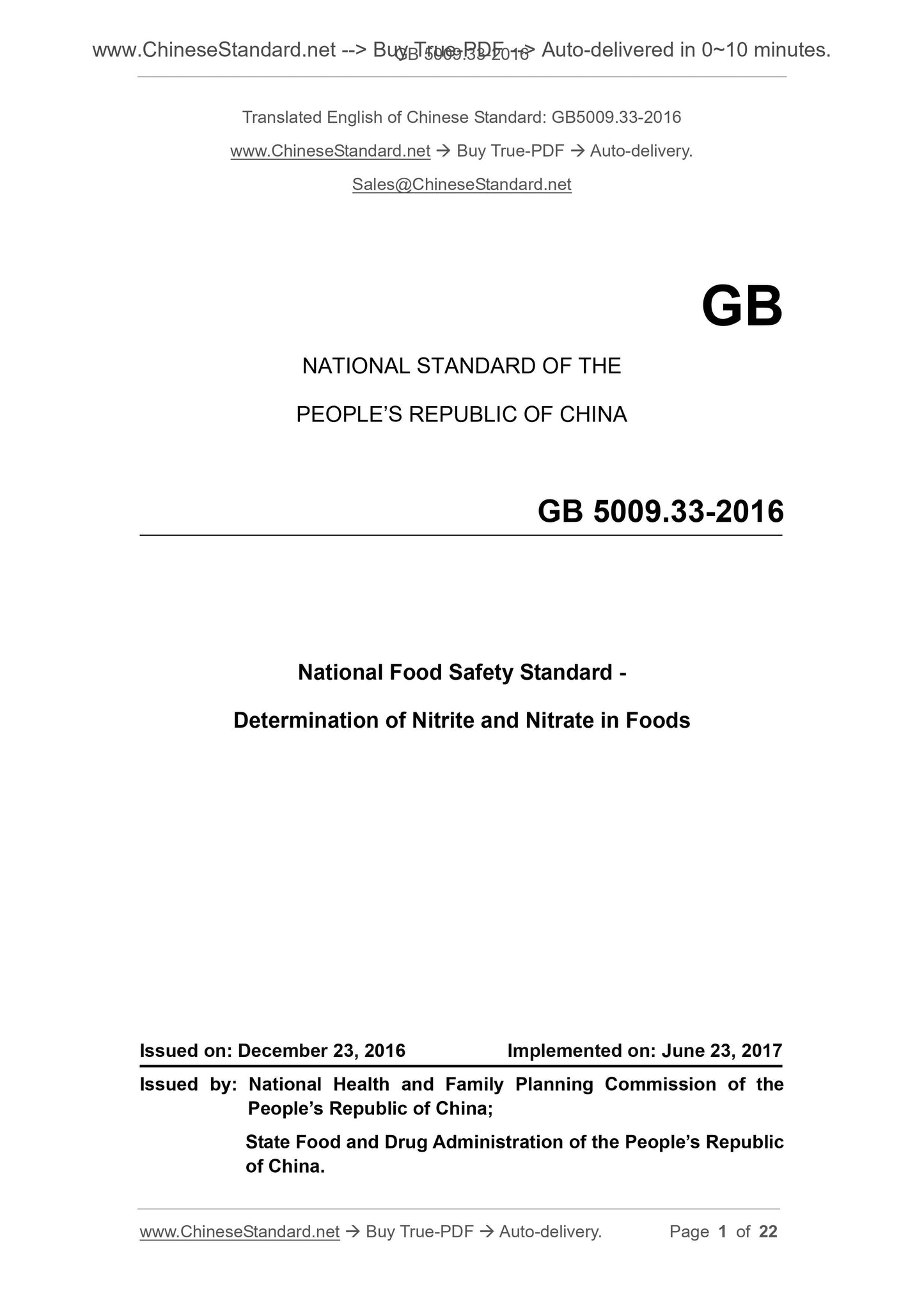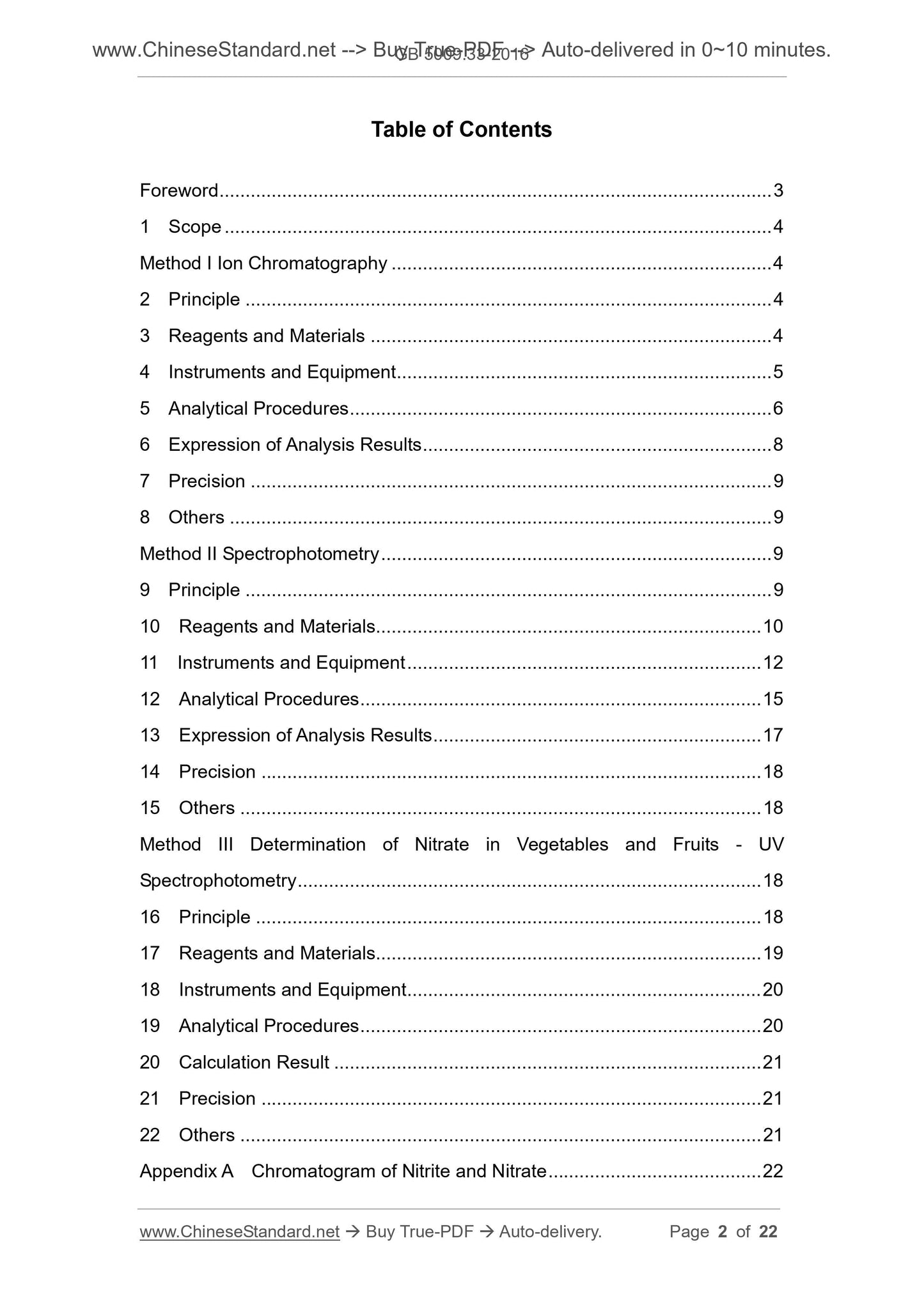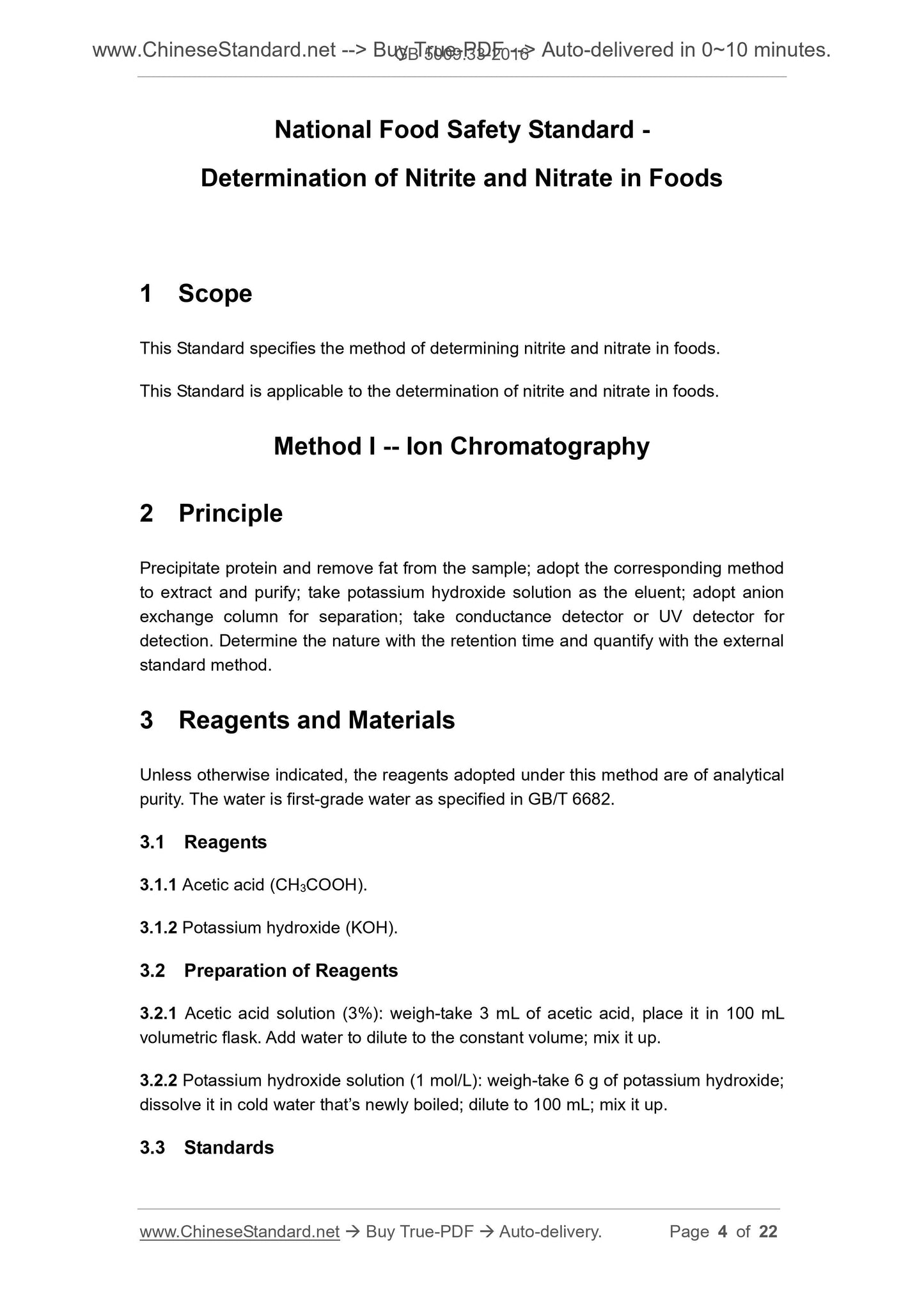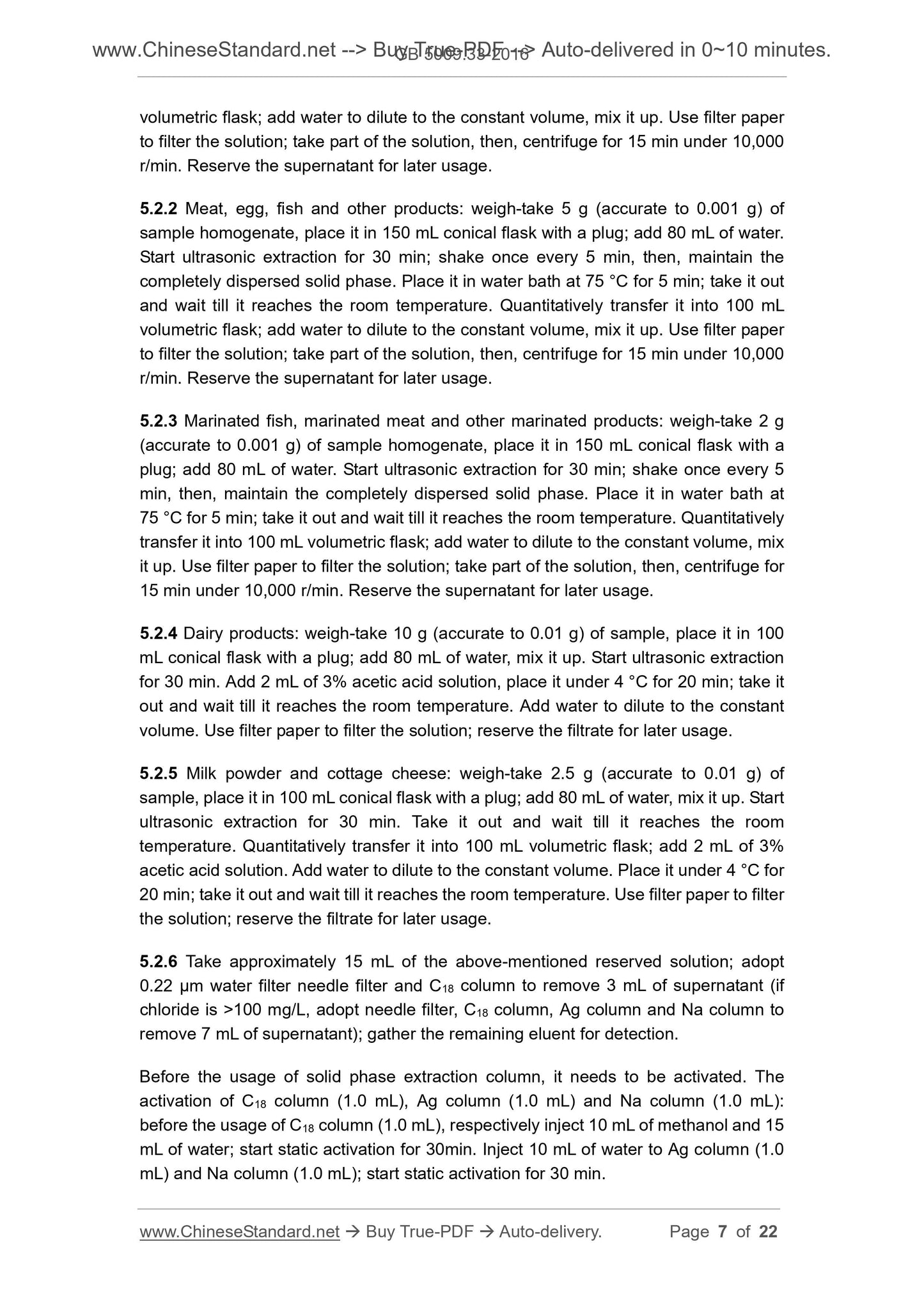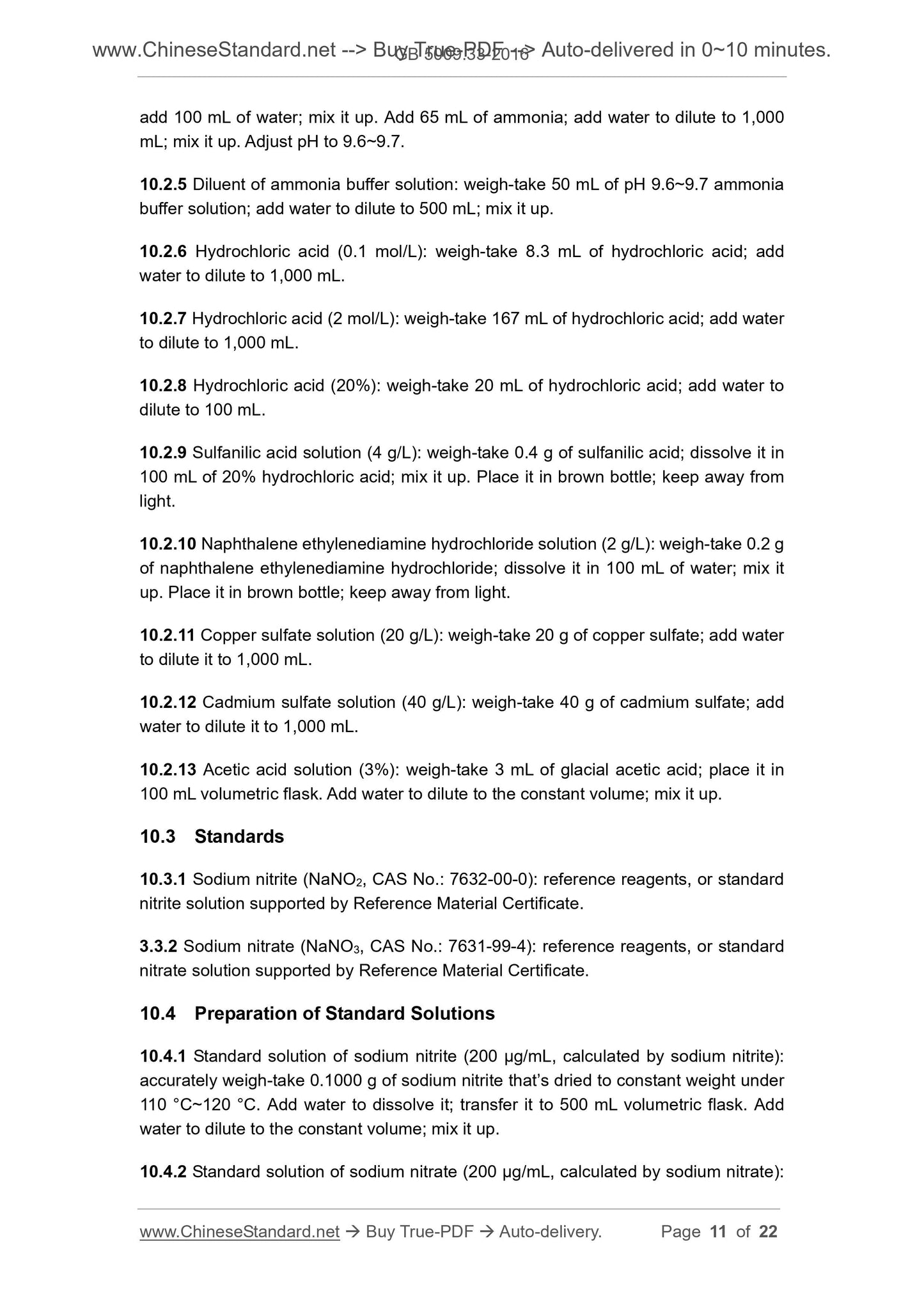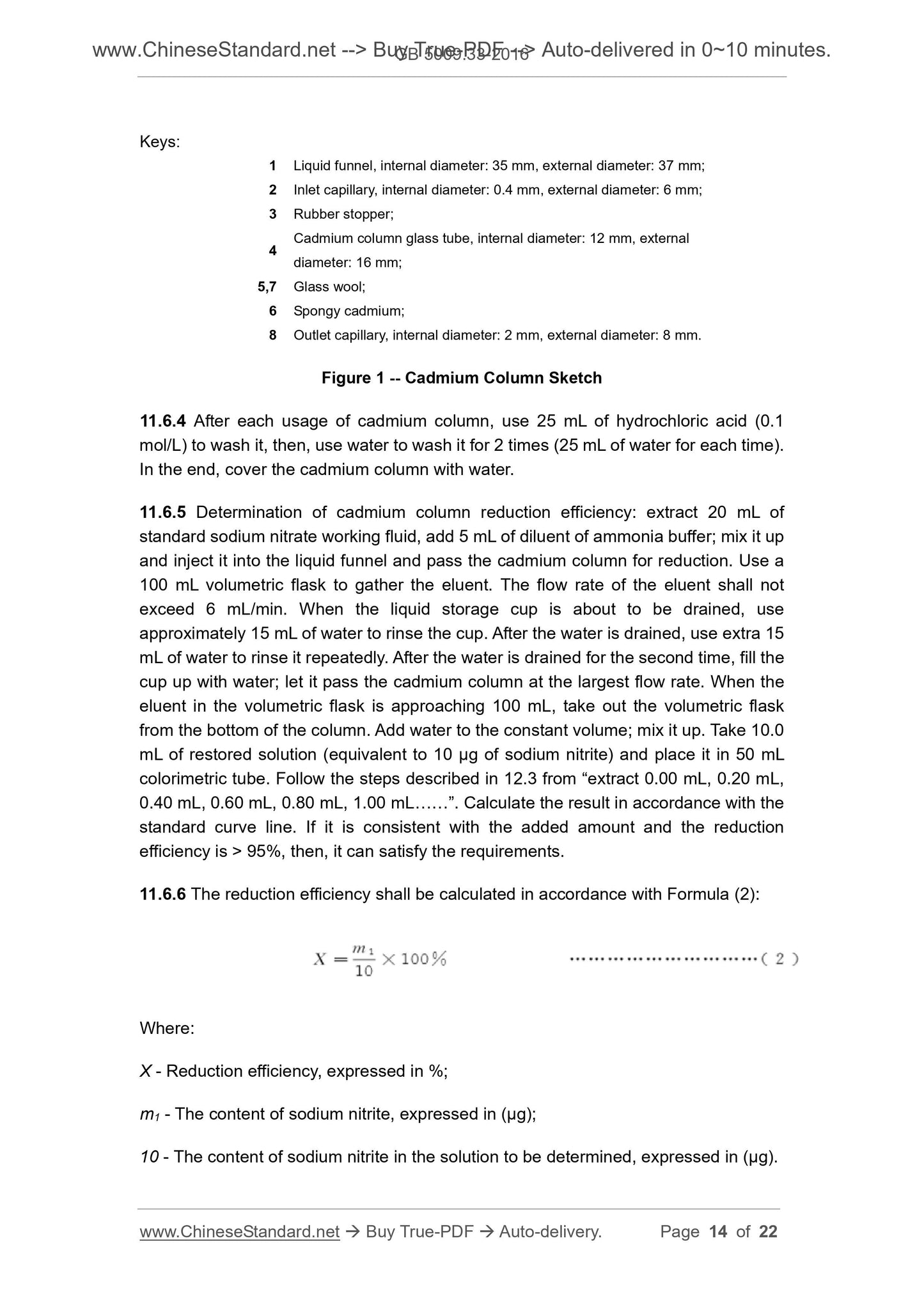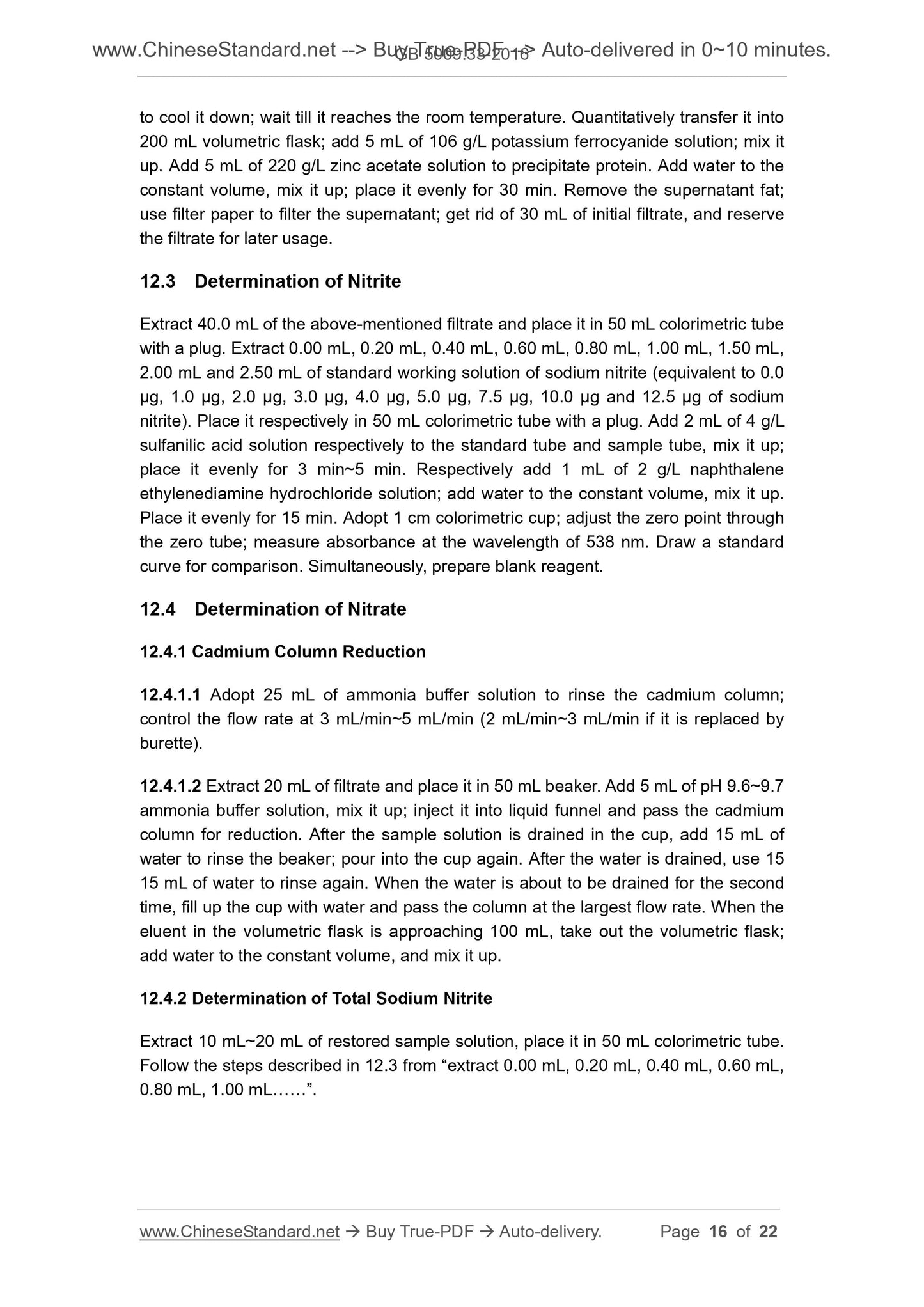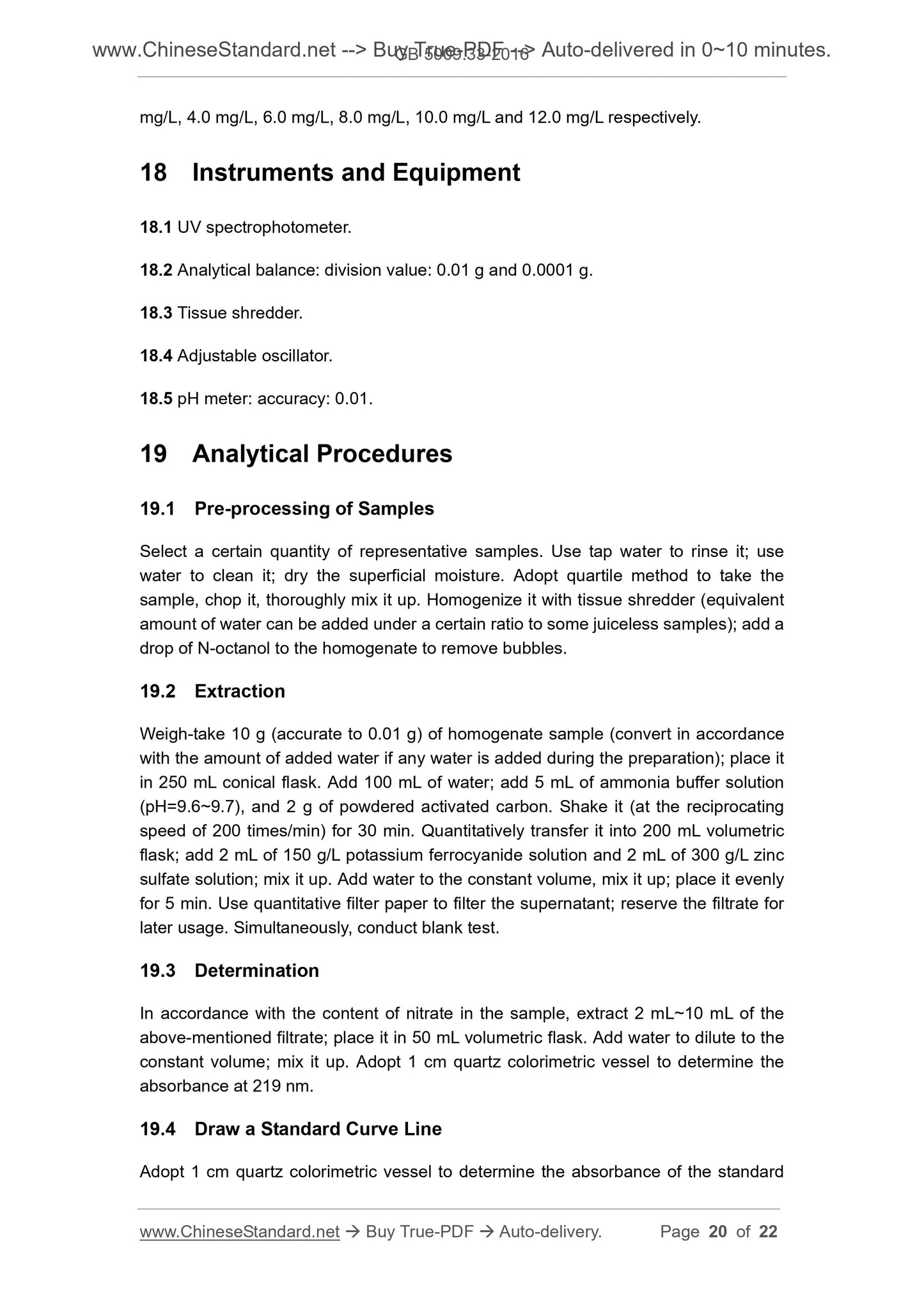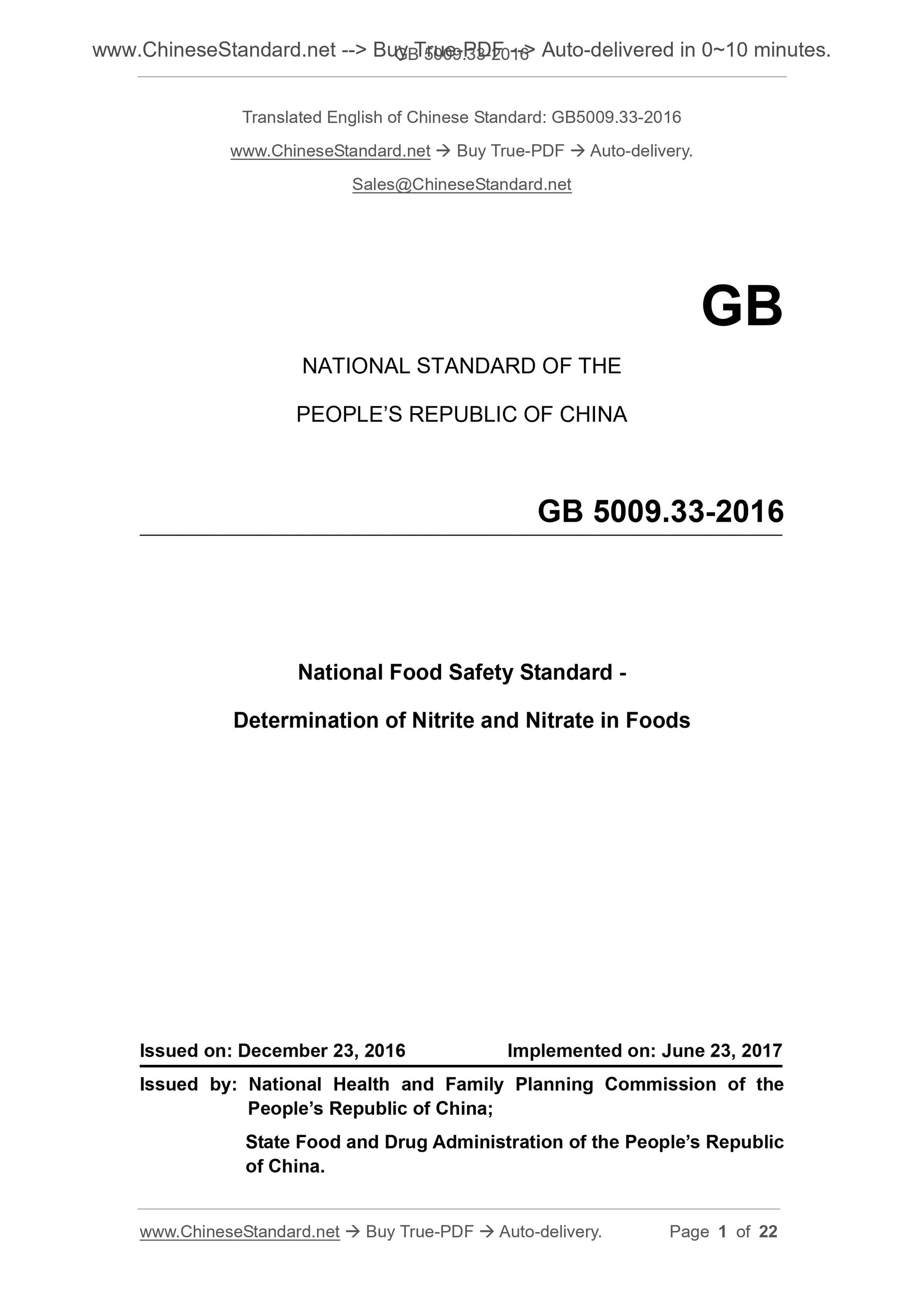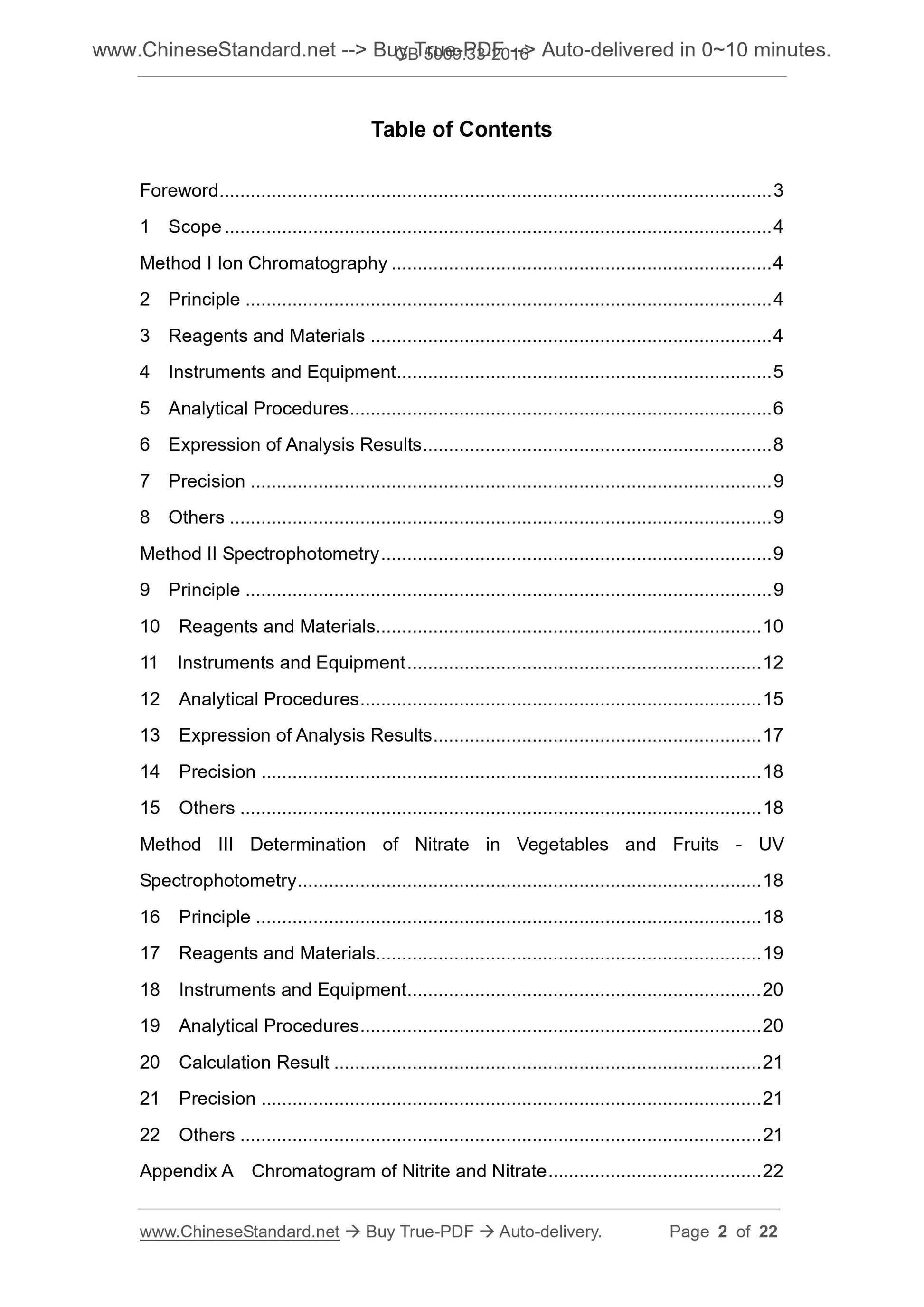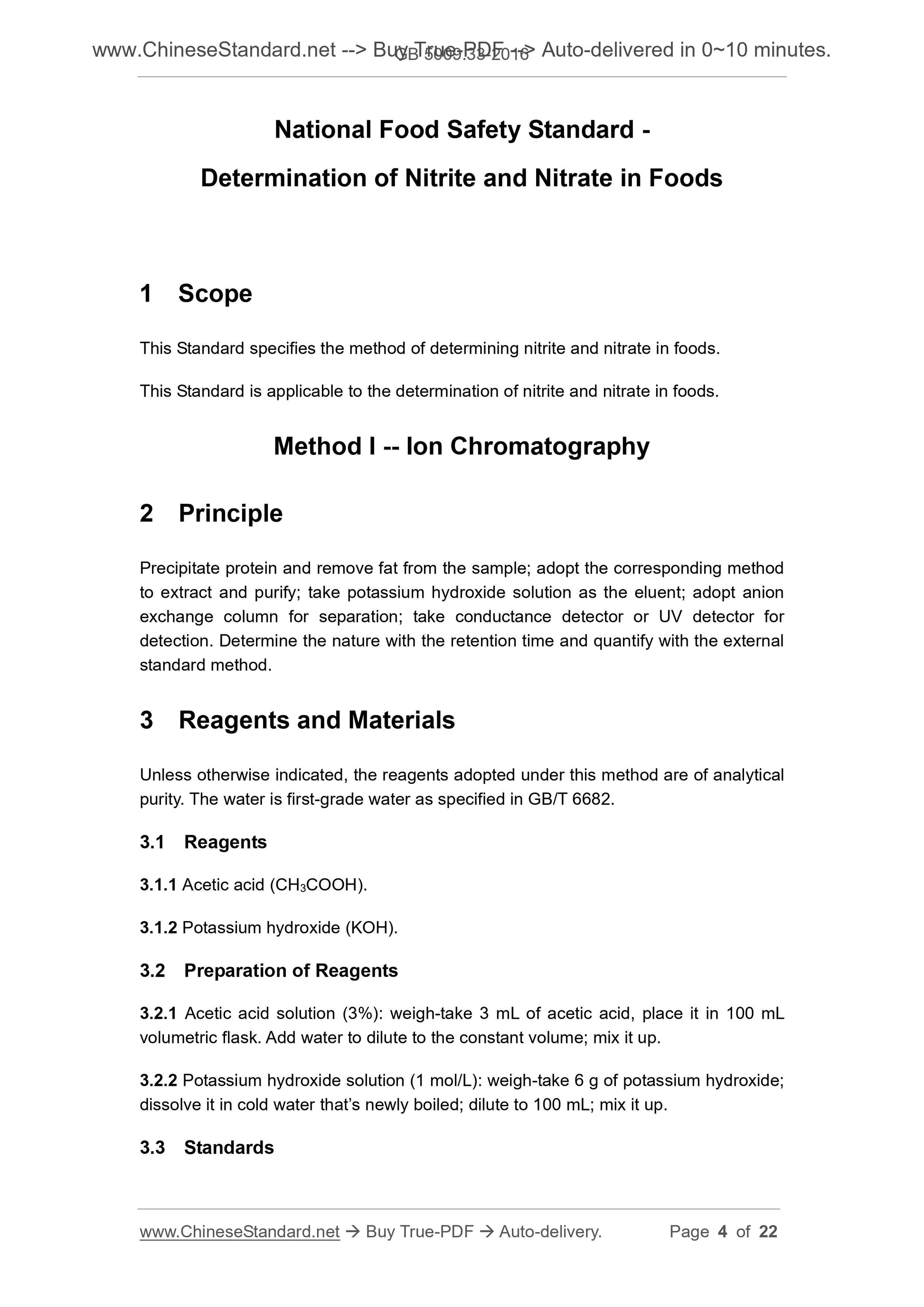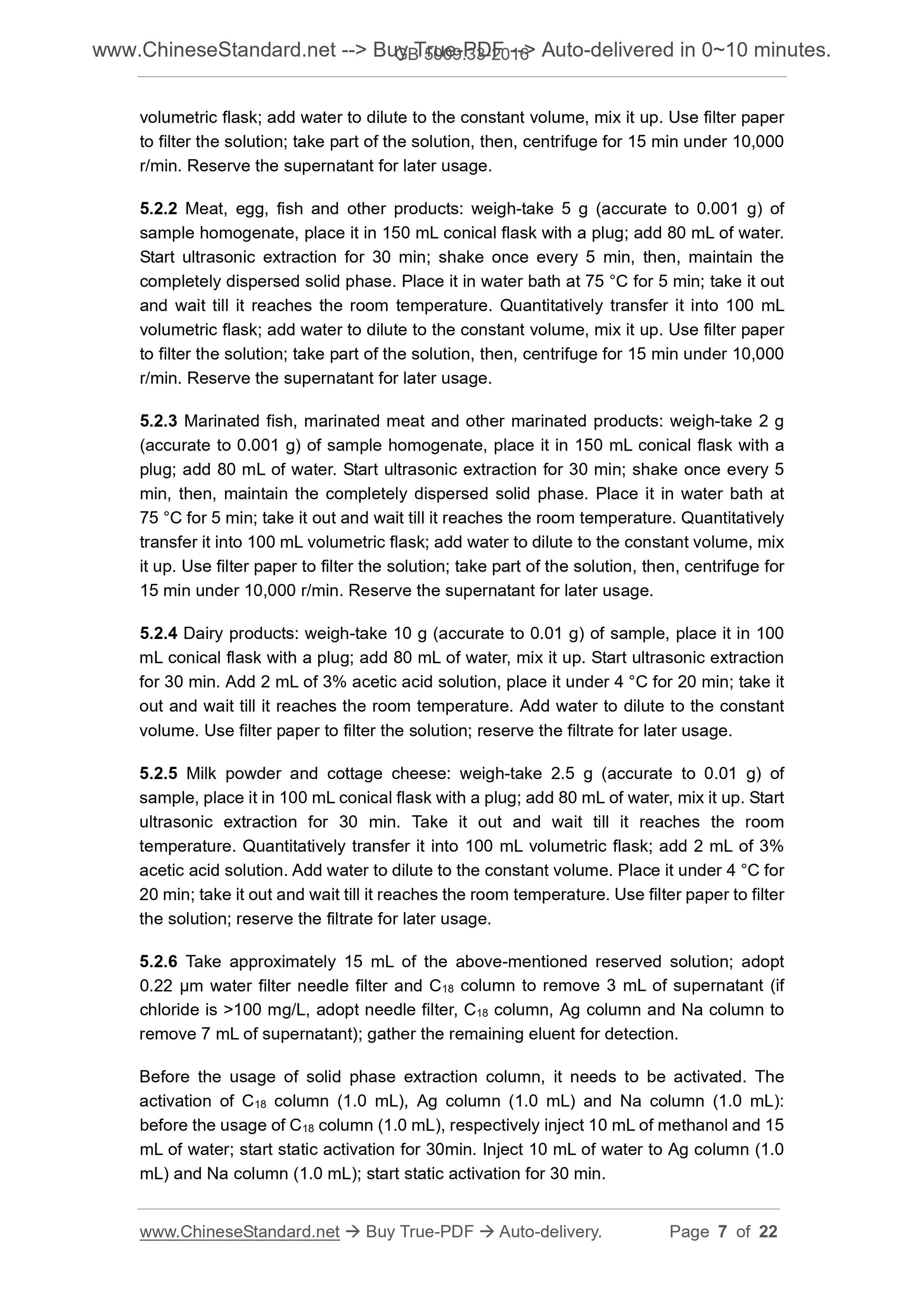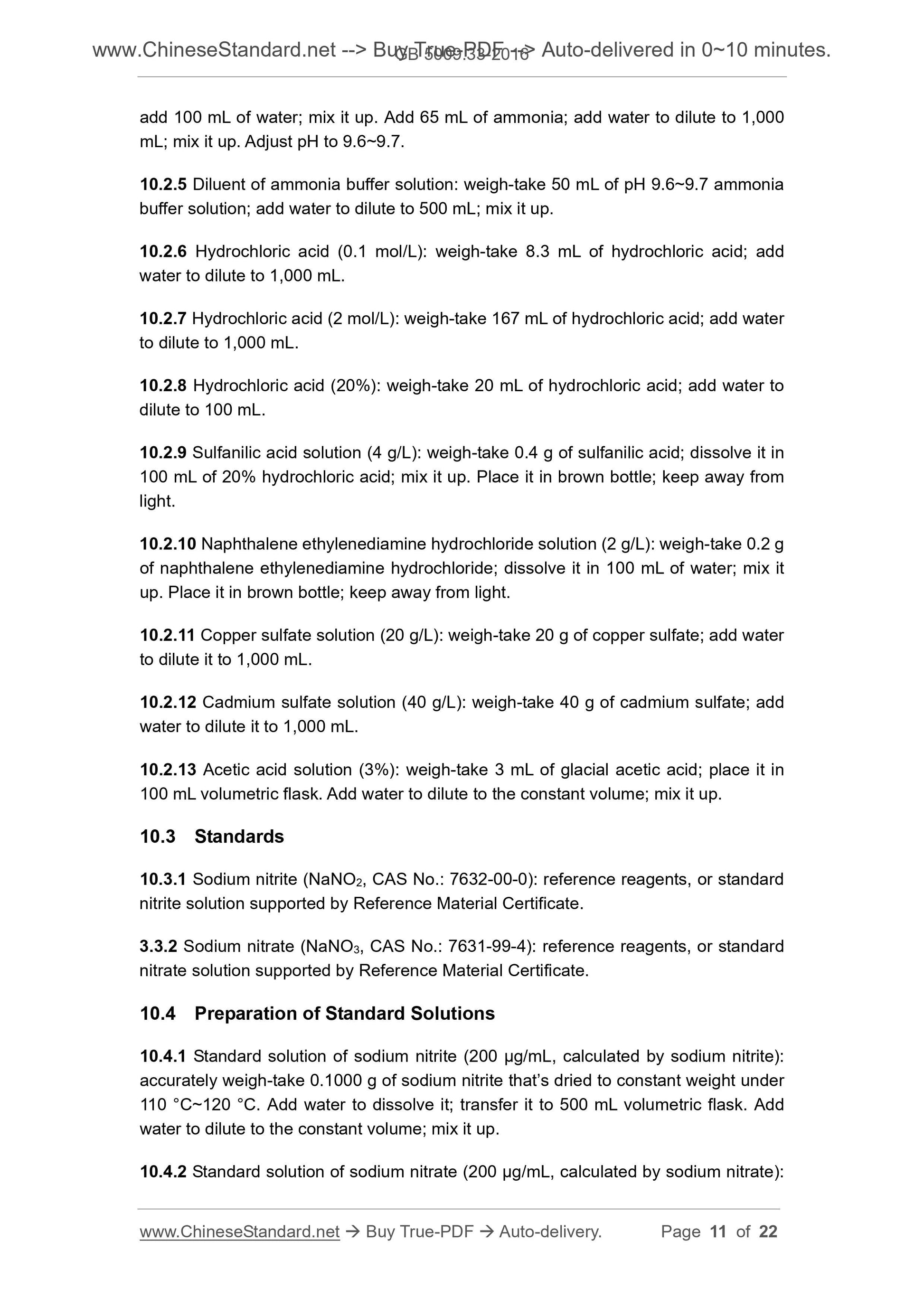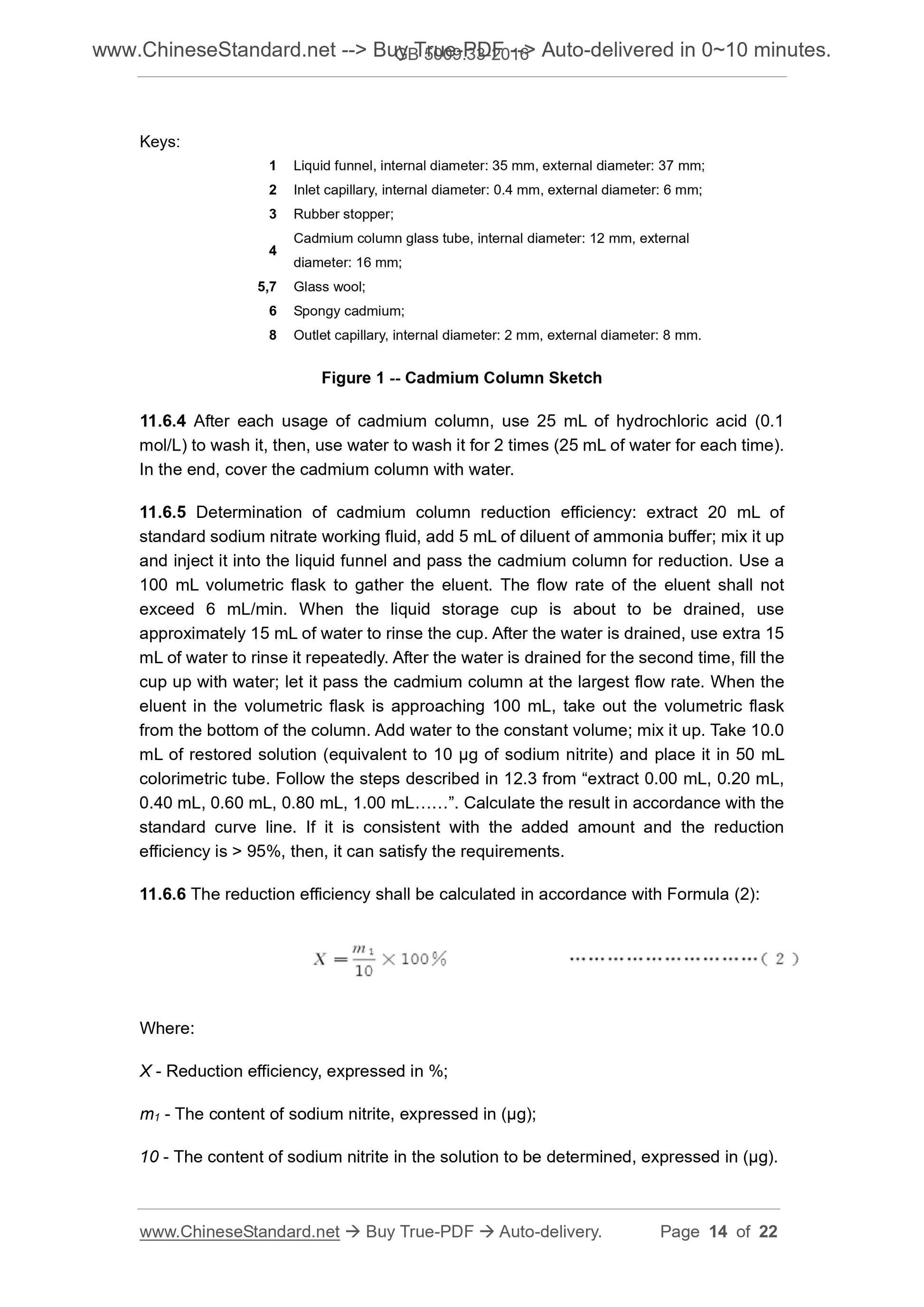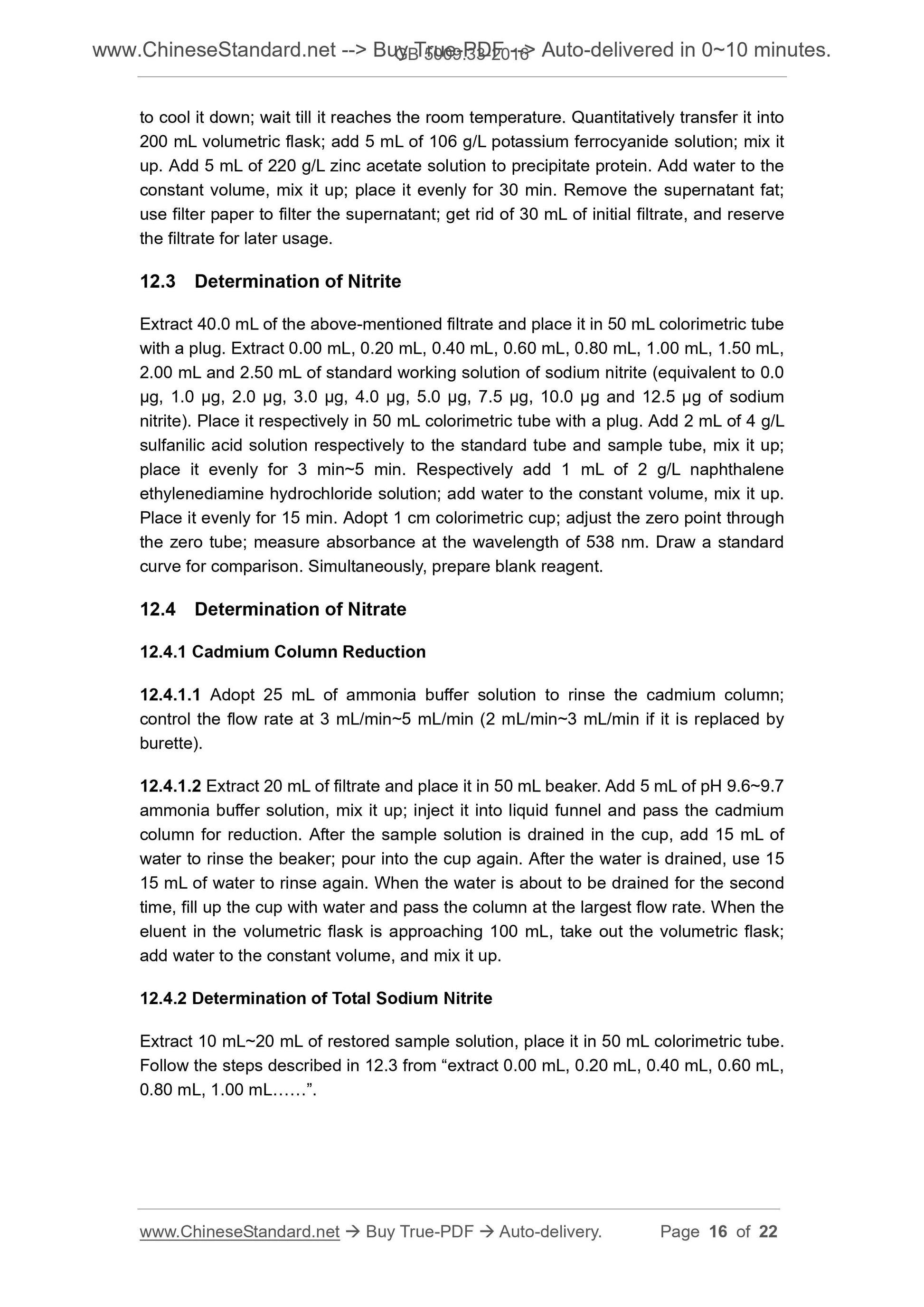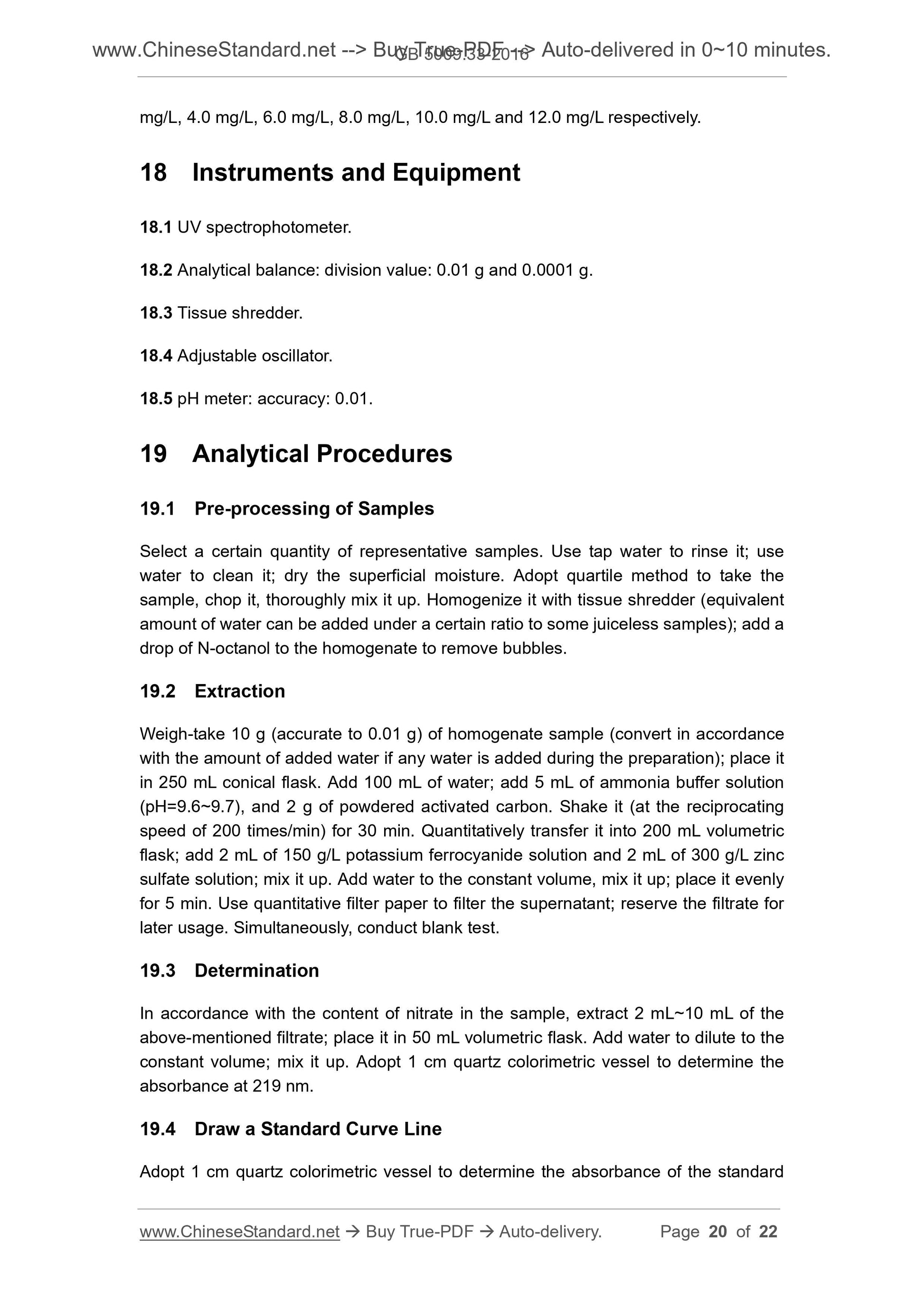1
/
of
8
www.ChineseStandard.us -- Field Test Asia Pte. Ltd.
GB 5009.33-2016 English PDF
GB 5009.33-2016 English PDF
Regular price
$115.00
Regular price
Sale price
$115.00
Unit price
/
per
Shipping calculated at checkout.
Couldn't load pickup availability
GB 5009.33-2016: National food safety standard - Determination of Nitrite and Nitrate in Foods
Delivery: 9 seconds. Download (and Email) true-PDF + Invoice.Get Quotation: Click GB 5009.33-2016 (Self-service in 1-minute)
Newer / historical versions: GB 5009.33-2016
Preview True-PDF
Scope
This Standard specifies the method of determining nitrite and nitrate in foods.This Standard is applicable to the determination of nitrite and nitrate in foods.
Method I -- Ion Chromatography
Basic Data
| Standard ID | GB 5009.33-2016 (GB5009.33-2016) |
| Description (Translated English) | National food safety standard - Determination of Nitrite and Nitrate in Foods |
| Sector / Industry | National Standard |
| Classification of Chinese Standard | C53 |
| Word Count Estimation | 15,131 |
| Date of Issue | 2016-12-23 |
| Date of Implementation | 2017-06-23 |
| Older Standard (superseded by this standard) | GB 5009.33-2010; NY/T 1279-2007; NY/T 1375-2007; SN/T 3151-2012 |
| Regulation (derived from) | National Health and Family Planning Commission Notice No.17 of 2016 |
| Issuing agency(ies) | National Health and Family Planning Commission of the People's Republic of China, State Food and Drug Administration |
Share
